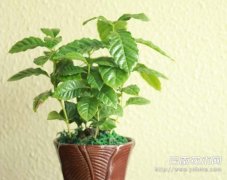Explain the knowledge of coffee trees, picking and roasting of coffee beans

First, coffee trees
The coffee tree is an evergreen tree that can grow as high as a three-story building. However, generally planted coffee trees are trimmed to a height of less than two meters in order to facilitate harvesting. Coffee trees have white flowers, and the orchard has a faint jasmine fragrance when it blossoms. Like other fruit trees, coffee flowers will bear dark green oval fruit when they wither. Over time, the dark green fruit will gradually turn to yellow and then red, and the red fruit is the best condition for full ripening. Farmers are nicknamed "cherry" because their color is as red as a cherry. The coffee beans we are familiar with are the seeds that grow in the "cherry" fruit. The outer skin and useless flesh are removed from each fruit, and the two opposite seeds are wrapped inside.
There are four kinds of coffee trees in the world, of which only two are of real commercial value and have been planted in large quantities. One is the Elaraby species (Arabica), and the other is the Romasta species (Robusta). Different varieties of coffee beans have different tastes, but even the same varieties of coffee trees have their own unique flavor due to the influence of different soils and different climates.
2. Picking
Coffee trees begin to bear fruit about three to five years after sowing, and are harvested for the next 20 years from the beginning of fruiting. In order to facilitate harvesting, farmers prune coffee trees to no more than 150 centimeters, because they have to climb ladders to pick them, which is not only time-consuming, but also may hurt the trees by bending branches. Coffee trees need to be planted with some tall shade trees, which shade and dissipate heat during the day and keep warm at night, so you can often see the staggered arrangement of low shrubby coffee trees and banana or mango trees in the coffee garden.
Coffee fruit grows densely along each branch, and although it grows on the same branch, the ripening period of each fruit is different, some are still turquoise, some have slightly yellowish, some are yellowish red, some are fully ripe bright red, and some are dry dark brown. Because they are not ripe at the same time, coffee fruits must be picked manually. Red or yellowish red fruits must be manually selected before they can be picked, and green fruits must be skipped. Workers have to check the ripeness of the fruit at the same place every day before picking it. Coffee fruits from the same branch often take several weeks to pick back and forth again and again before the harvest is complete.
3. Baking
The main purpose of roasting coffee beans is to produce chemical changes in the internal structure of coffee beans by heating. More specifically, heating makes the bean water evaporate, the volume expands, the chloric acid in the bean is more uniform or low, the carbohydrate is coked, and the oil in the bean is released through the bean wall with fragrance. Baking must be uniform. If you only want to be fast and uneven, the beans may be beautiful on the outside but light on the inside, and have not yet begun to decompose. The deep roasting, medium roasting and shallow roasting of beans are decided and controlled by the coffee company; even there is a knack for cooling the beans before the baking is over, whether to spray or blow. If the temperature is not cooled quickly, the heat contained in the beans will make the beans darker and greasy, and the taste will become bitter.
Important Notice :
前街咖啡 FrontStreet Coffee has moved to new addredd:
FrontStreet Coffee Address: 315,Donghua East Road,GuangZhou
Tel:020 38364473
- Prev

The roasting process of coffee tree fruit from coffee tree to coffee
Coffee is a perennial evergreen shrub or small tree of Rubiaceae. It is a horticultural perennial cash crop with the characteristics of fast growth, high yield, high value and wide market. Wild coffee trees can grow to a height of 5 to 10 meters, but coffee trees planted on the manor are often cut to less than 2 meters in order to increase their fruit and facilitate harvesting. The first flowering period of a coffee tree is about the age of the tree.
- Next

Culture methods of potted Coffee trees the growth process of coffee trees
There are many coffee plants in Yunnan, and they are of good quality. This is the help given by the unique climate. The purpose of planting coffee trees is to harvest high-quality coffee beans, but the cultivation process is very strict, and it can be said that appropriate climatic conditions are needed: sunshine, rainfall, soil, air temperature, as well as the way coffee beans are harvested and the production process. Will affect the quality of the coffee itself.
Related
- Beginners will see the "Coffee pull flower" guide!
- What is the difference between ice blog purified milk and ordinary milk coffee?
- Why is the Philippines the largest producer of crops in Liberia?
- For coffee extraction, should the fine powder be retained?
- How does extracted espresso fill pressed powder? How much strength does it take to press the powder?
- How to make jasmine cold extract coffee? Is the jasmine + latte good?
- Will this little toy really make the coffee taste better? How does Lily Drip affect coffee extraction?
- Will the action of slapping the filter cup also affect coffee extraction?
- What's the difference between powder-to-water ratio and powder-to-liquid ratio?
- What is the Ethiopian local species? What does it have to do with Heirloom native species?

